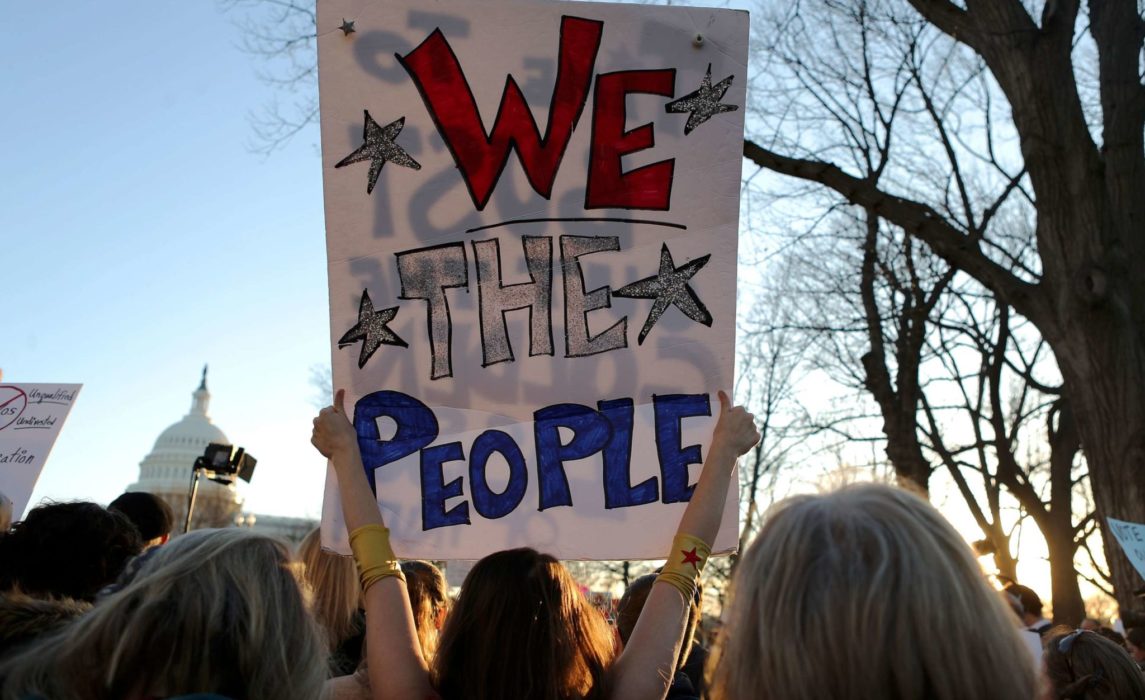WSJ’s Seib Partially Diagnoses What Ails Democracy

The cyclical nature of many things in life gives some of us comfort. Long ago, I bought into Arthur Schlessinger’s cyclical description of American political history and was amused by Kurt Anderson’s reference to it in a Vanity Fair piece about the transitional phase our culture seems to be in (2012) until his rather depressing conclusion, which seems more depressing six-years on:
I’ve been a big believer in historical pendulum swings—American sociopolitical cycles that tend to last, according to historians, about 30 years. So maybe we are coming to the end of this cultural era of the Same Old Same Old. As the baby-boomers who brought about this ice age finally shuffle off, maybe America and the rich world are on the verge of a cascade of the wildly new and insanely great. Or maybe, I worry some days, this is the way that Western civilization declines, not with a bang but with a long, nostalgic whimper.
Schlessinger’s notion of a fairly predictable 30-ish year swing of the pendulum from the left to right and back again has historically given people faith in our democracy’s ability to correct itself, and the Trumpist “MAGA” mantra is as true an example of a nostalgic whimper as one could imagine. But the cycle seems to be broken and Wall Street Journal columnist Gerald Seib has partially diagnosed the problem in “If Faith in Democracy Ebbs, Danger Rises” (pay-wall). What many journalists miss, perhaps born of their own cynicism or need for objectivity, is that democracy’s ability to correct itself depends on people seeing beyond the symptoms to the disease itself, before the cure can take root.
Seib gives a quick recounting of then-candidate Trump’s harping about an electoral system rigged against him that gave way to his embrace of that same system in his shocking victory, followed by the Democrats embrace of the rigged mantra pointing to gerrymandering, and a stacked Supreme Court. Seib gets to his diagnoses when he writes:
As the nation celebrates its Independence Day, it is worth considering the dangers embedded in these grievances. A functioning democracy depends on the belief that the system is fair, that votes count and that the proper recourse for unhappy citizens is the electoral process. If that faith is lost, the chances that citizens will resort to other, darker means for venting their frustration go up significantly.
”It doesn’t lead to a good place if people on both sides continue to feel this way for very long,” says presidential historian Michael Beschloss. American democracy has flourished because citizens “had the faith that if you wait for a while the system would, from their point of view, correct itself. People are losing their faith.”
Seib notes, correctly, both parties share responsibility and correctly highlights one reform, ending partisan and racial gerrymandering and drawing fair districts, that would be a huge boost in confidence for people that their voice and vote matters.
To the extent actual “rigging” of the rules is happening it has been decidedly lopsided for the last decade as the GOP gave a master class in gerrymandering in 2011 that the courts in several states (Virginia, Florida, North Carolina, Pennsylvania) have had to remedy. In Ohio, the citizens took solving the problem into their own hands, but that may not be enough and it, too, is on track to be heard in the courts. In true Democratic Party fashion, they tried to gerrymander like the GOP, but only got the courts really riled up in Maryland. Make no mistake, any party or politician who thinks their power is more important than the will of the people expressed in free and fair elections is a threat to democracy. So Democrats flirting with a “Blue Map” counterpunch to the GOP’s “Red Map” strategy should think again, and both parties should look instead to the people, the true power in our democracy.
What Seib fails to address is why this historic cycle has been broken: demographic shifts that make it impossible to deny that our democracy doesn’t reflect who we are as a people right now. While neither party is free from blame for gerrymandering or the corrupting influence of money, only one party looks at the demographic shifts and, until recently, seemed comfortable with the notion that they aren’t connecting with rising American majority. As it’s become clear President Trump’s zero-tolerance immigration policy was intended to send a message to immigrants, and not just those at the border, more Republican’s have voiced some discomfort.
By looking only at the symptoms, Seib misses the real disease, efforts to make minority-rule something that looks like American democracy but isn’t at all what the Constitution as amended, intends.
There are solutions for what ails self-governance, but there aren’t any substitutes for it. The solutions are already working in communities around the country. What we need are leaders in both parties to commit to working together to create a 21st Century democracy that works for everyone, or put their cards on the table and tell the people what it is they think should replace our representative democracy, rather than trying to make a governing minority appear to be something it’s not.